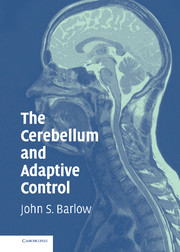Book contents
- Frontmatter
- Contents
- Preface
- Acknowledgments
- PART ONE ANATOMY AND PHYSIOLOGY OF THE CEREBELLAR SYSTEM
- PART TWO CEREBELLAR FUNCTIONS
- 7 Cerebellar Memory, Long-Term Depression, and Long-Term Potentiation
- 8 The Vestibulocerebellum and the Oculomotor System
- 9 The Cerebellum and Cognition
- 10 Timing Functions, Classical Conditioning, and Instrumental Conditioning
- 11 Cerebellar Pathology in Humans and Animals: Genetic Alterations
- 12 Specialized Cerebellum-Like Structures
- PART THREE MODELS AND THEORIES
- PART FOUR SUMMARY AND CONCLUSIONS
- APPENDIX A A Hybrid Analogue/Digital Multiplexer/Multiplier-Based Adaptive Signal Processor
- Author's Note
- Bibliography
- Index
10 - Timing Functions, Classical Conditioning, and Instrumental Conditioning
Published online by Cambridge University Press: 28 October 2009
- Frontmatter
- Contents
- Preface
- Acknowledgments
- PART ONE ANATOMY AND PHYSIOLOGY OF THE CEREBELLAR SYSTEM
- PART TWO CEREBELLAR FUNCTIONS
- 7 Cerebellar Memory, Long-Term Depression, and Long-Term Potentiation
- 8 The Vestibulocerebellum and the Oculomotor System
- 9 The Cerebellum and Cognition
- 10 Timing Functions, Classical Conditioning, and Instrumental Conditioning
- 11 Cerebellar Pathology in Humans and Animals: Genetic Alterations
- 12 Specialized Cerebellum-Like Structures
- PART THREE MODELS AND THEORIES
- PART FOUR SUMMARY AND CONCLUSIONS
- APPENDIX A A Hybrid Analogue/Digital Multiplexer/Multiplier-Based Adaptive Signal Processor
- Author's Note
- Bibliography
- Index
Summary
Timing Functions
In a comparative study of normal controls and patients with cerebellar lesions, Ivry and Keele (1989) found a deficit both in the production and perception of timing tasks (i.e., an increase in the variability of performing rhythmic tapping) and increased difficulty in making perceptual discriminations concerning small differences in durations of a standard tone.
Based on consideration of results from experimental animals and normal subjects and from patients with cerebellar lesions in studies of classical conditioning, temporal conditioning to different time intervals, of rhythmic movements of fingers, judgments of the duration of brief tones, comparisons of the velocities of moving objects, and the like, Keele and Ivry (1990) raised the question of whether the cerebellum (or the cerebellum together with closely related structures) provides a common computation for diverse tasks, in particular, for time. The authors termed the concept an adaptive timing hypothesis.
Impaired perceptual judgments of the velocity of moving stimuli, but not of their position, were reported by Ivry and Diener (1991) by patients with cerebellar lesions; the difference was not attributable to eye movements. It was concluded that the results confirm the role of the cerebellum in perceptual functions requiring precise timing.
According to Ivry (1993) several lines of evidence, including that from healthy subjects, indicate there is a correlation between performance on movement and on perception that requires precise timing, which implicates cerebellar involvement in the explicit representation of temporal information.
- Type
- Chapter
- Information
- The Cerebellum and Adaptive Control , pp. 129 - 136Publisher: Cambridge University PressPrint publication year: 2002



